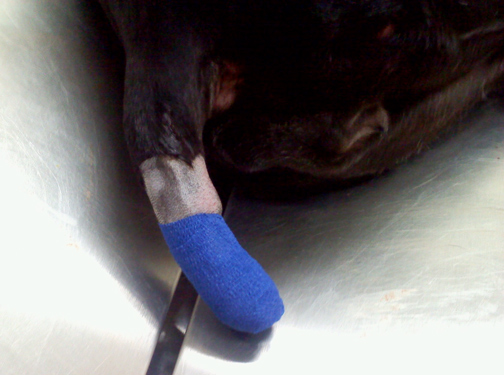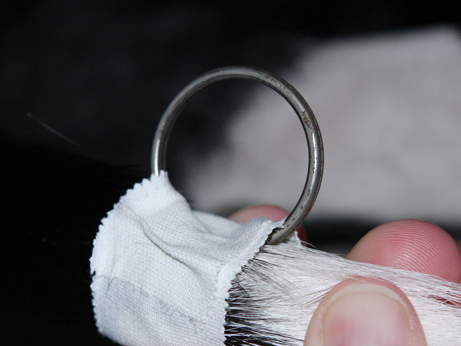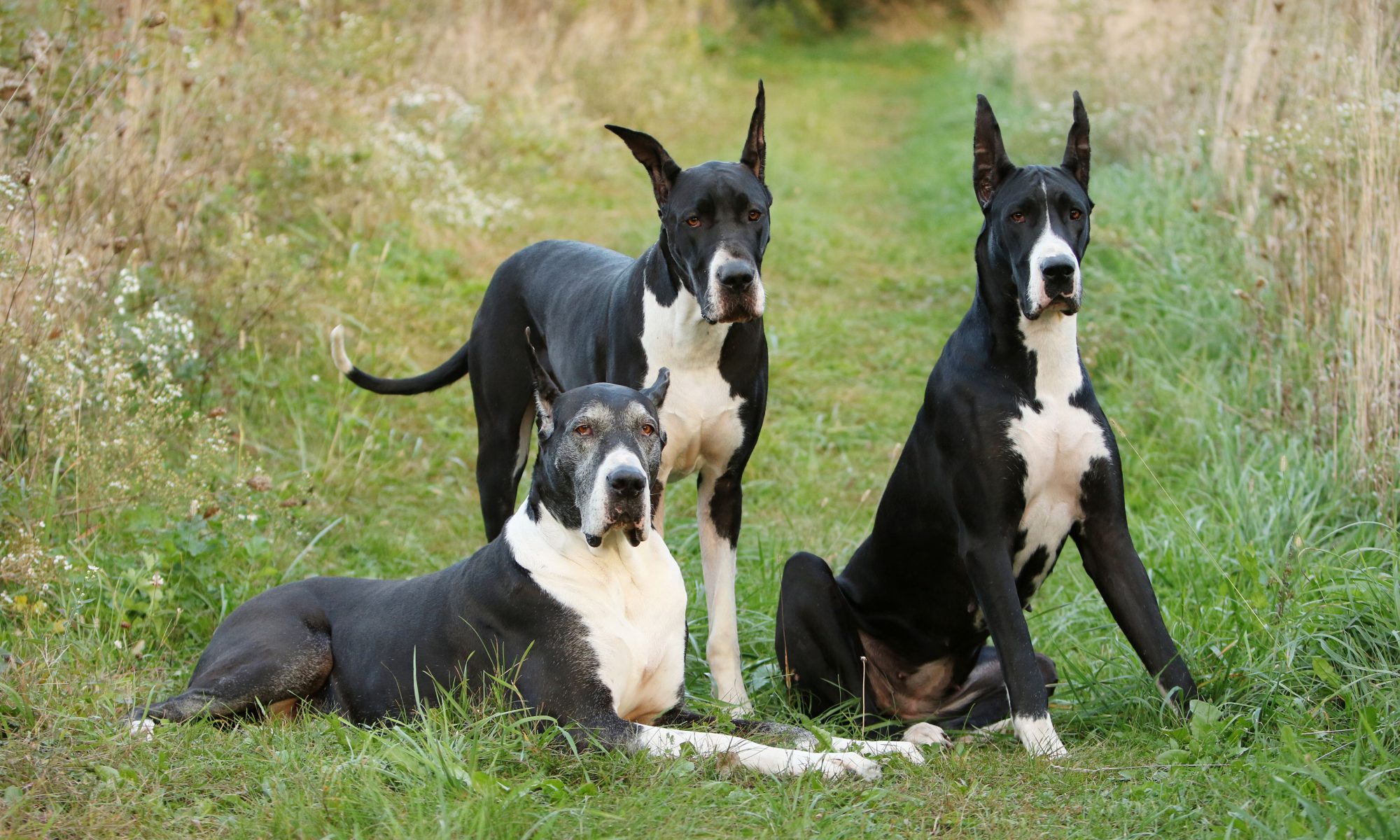Danes are notorious for “happy tail” – they wag their powerful tails hard and sometimes it smacks walls and other objects, causing the end of the tail to break open. While this doesn’t normally seem to cause the dogs discomfort, it’s not very fun for the owner. Putting blood on the tip of a wagging tail equals blood spatters on every surface in a room in mere moments (hydrogen peroxide works wonders in getting blood out of fabrics).
Not all Danes have this issue, but it seems once a dog has done it, they will continue to experience issues with it. In part, because the more the tail gets injured, the easier it is to break open again. And, in part, because the ones that break it open once are likely to be the type of waggers that continually have the issue.
Of my Danes, Skyy had happy tail. She wagged her tail all the time and when she got extra happy, that tail was almost lethal. I joked that she could find something on which to smack her tail in the middle of an empty field.
None of her puppies seemed to have been as cursed with the happy tail problems, until Bree’s recent boarding experience. Her owner had Bree boarding at a vet clinic and the hard kennel walls, mixed with an excited tail didn’t work well. Bree, who hadn’t had chronic tail problems, busted her tail open so bad that a tendon was hanging out. By this point, there isn’t much to do, other than amputating the tail.

If the tail is to the point of amputation, I would recommend amputating the majority of the tail and leaving a very short tail. Trying to save “the majority” of the tail does not seem to be very effective as if too much length is left, the dog can still injure the end. Take enough off so that it will not continue to smack into objects when the dog is wagging. Word of caution – leave enough of a stub that if there are any healing problems, there is enough skin left for which the vet to work.
For owners dealing with happy tail, it does not always result in amputation. (Most happy tails do not start out as severe as Bree’s situation!) There are some taping methods that work fairly well.
You will quickly learn that attempting to tape just the end of the tail is worthless. The taping method we used for Skyy, a tried and true method, worked really well. The concept is to tape the dog’s tail up under their body, as if they were tucking their tail. This keeps them from being able to whip the end of the tail around, allowing the tail a chance to heal. You leave the injured part of the tail free to breath and heal.
You’ll need an O ring, swivel clip, some fabric to create a “belt” (I used the waist part of an old sweatshirt) and some cloth tape.



You can unclip the tail when the dog goes out to potty, although the dog will move their tail to the side, so I typically did not unclip it.
Get the tail taped up as soon as there is an issue and leave it taped for a couple of weeks after you think it is healed. A dog is more apt to break open the tail again if it isn’t healed well. There is the possibility that you’ll end up doing a fair amount of this taping method off and on throughout the dog’s life. But, you stand a good chance at being able to save the tail and your sanity, as blood spattered walls are no fun. For those showing their Danes, a docked tail is a disqualification in our breed, so amputation means the end of a show career.
In addition to taping while the tail is healing, there are other preventative ideas that help. If the dog is breaking the tail open while kenneled, padding the sides of the crate/kennel might help. Teaching the dog to sit when greeting you can help as well.
